The
Ultimate guide
to
Marketing analytics


Introduction
Hello, marketing enthusiasts! 🌟
Starting your business journey in today's dynamic environment, huh? Imagine this: you're not just a business owner or a marketer; you’re an explorer navigating the uncharted territories of the market. Your map? Data. Your guiding light? Marketing analytics.
In this landscape, numbers dance, revealing patterns and insights, and graphs are your guiding stars to business prosperity. And, if you're thinking, "This sounds exciting, but high school math was a challenge," worry not! This isn’t a dull old manual. It’s your fun playbook, simplifying the complexities of marketing analytics, cutting through the jargon, and keeping the enthusiasm alive.
Whether you're a solo entrepreneur with a cozy café or part of a vibrant marketing team for a bustling SME, this guide is meticulously designed for you. So, buckle up; it’s going to be an enlightening journey!
Brief History of Marketing Analytics
Gather around, knowledge seekers, for a story tracing back to the roots of modern marketing! 📜
In the simpler times, marketing was straightforward. Think friendly shopkeepers, handmade signs, and praises shared by word of mouth. How uncomplicated! But as businesses expanded and cities buzzed with activity, the need for rudimentary analytics emerged.
Visualize the 1920s, with radios buzzing and advertisements interspersed with jazzy tunes. It was a time marking the initial endeavors to comprehend customers. Surveys and rudimentary sales tracking planted the early seeds of analytics.
Jump to the vibrant 80s and 90s. The advent of computers marked a significant transformation! Databases advanced, and spreadsheets became the marketer's go-to tool. Now, we could monitor sales, comprehend demographics, and even foresee trends. Exciting, right?
However, the real evolution kickstarted in the 2000s with the internet boom, making every click, like, share, and tweet a source of invaluable insights. Thus, modern marketing analytics emerged. Tools improved, algorithms became sharper, and marketers? They transformed into data gurus!
In essence, the evolution of marketing analytics is a narrative of human ingenuity and curiosity. From small stores to global e-commerce powerhouses, the desire to understand our customers has been a constant. And now? You’re writing the next chapter in this ever-evolving story.
Why Analytics Matter Now More Than Ever
If marketing is the business's heartbeat, analytics is the rhythm. 🩺❤️
-
Riding the Digital Wave 🌊
We're deep into the digital era, and nearly every aspect of our lives is intertwined with the online world. With this pervasive digitization, every online interaction generates a plethora of data. Analytics is your reliable gear to navigate this extensive digital ocean.
-
The Evolved Consumer 🦋
The era of generic advertising and standardized campaigns is behind us. Today’s consumers are discerning, informed and have a plethora of choices. They demand relevance, personalization, and genuineness. Analytics is the key to deciphering their preferences, behaviours, and journeys.
-
The Efficiency Play 🚀
Gone are the days when marketing was predominantly hit or miss. With streamlined teams and focused budgets today, efficiency is crucial. Marketing analytics assures every step you take is well thought out, minimizing unnecessary expenditures and boosting ROI.
-
Forecasting the Future 🔍
Advanced marketing analytics offers a glimpse into upcoming trends, helping you stay ahead in the game. While it may not be perfectly clear, it’s the best insight we have into what lies ahead!
-
Building Trust Through Openness 🌈
Consumers today are buying into narratives, values, and reliability. In a world where misinformation and breaches are prevalent, openness is valuable. Analytics allows you to demonstrate responsible data use, enhancing their experience and building trust.
-
Agility Amidst Uncertainty 🤸♀️
If recent times have taught us anything, it’s the value of adaptability. The marketing terrain can alter in a blink. Analytics bestows businesses with the flexibility to adapt strategies promptly and seamlessly, steering through any turbulence.
In summary, beloved reader, marketing without analytics is akin to navigating without a guide; you might move forward, but reaching your goal is not assured. As the world advances and data proliferates, a strong grasp on analytics ensures your path is clear.
Ready to tap into this knowledge? Let’s dive in! 🌟

Getting the Basics Down
As we delve deeper into the captivating world of marketing analytics, it’s crucial to understand the fundamental concepts that will set us up for future success. Consider this chapter the initial few pages of your handbook. While the concepts might seem straightforward, even the most experienced marketers refer back to them when needed.
Whether you’re a solo-preneur wearing multiple hats or a member of a lively marketing team, mastering these basics is essential for uncovering the upcoming nuggets of wisdom in this domain. So, let’s take a light-hearted approach to break down the intricate to the understandable, the complex to the simple, and transform your marketing ventures from uncertain endeavours to strategic triumphs. Ready to interpret your inner marketing message? Let’s break it down, one basic at a time!
Defining Marketing Analytics
Before diving into the wonders of marketing, let’s start with understanding the essence of the craft:
- Marketing Analytics at Its Simplest:
Imagine you've initiated a campaign to attract more people to your shop. You’d naturally want to know if it worked! Did more people walk in? Were they the right customers? Did they like your products and spend money? Marketing analytics is like a reflection of the success or the learnings of your initiatives, measuring and analyzing the outcomes of your marketing activities.
- Digging a Bit Deeper:
Essentially, marketing analytics involves technologies, processes, and metrics that evaluate the success of your marketing initiatives, helping you identify what’s working and where you can improve.
- Why Not Just Call it "Data"?
Data is a broad term, while marketing analytics is more specialized. General “data” might show that 500 people visited your store, but marketing analytics will reveal the specifics of how they found you and why they came.
- The Essential Tools:
Just like any professional has specific tools, a marketer has specialized tools for analytics that capture and present data in a way that informs decisions.
In essence, marketing analytics is about interpreting data to bridge the gap between raw numbers and meaningful strategies. The next time you run a marketing campaign, remember to employ analytics to gauge its real impact. Are you ready to delve deeper into the world of analytics? Let’s keep going!
The Union of Marketing & Data Science
Fasten your seatbelts, dear readers, as we're about to explore the intersection of the artistic world of marketing and the precise realm of data science!
- A Convergence of Two Worlds:
Traditionally, marketing was considered a field driven by intuition and creativity, and data science was about numbers and logic. However, these fields started to merge as they found complementary elements in each other.
- When Creativity Meets Precision:
Marketing crafts dreams with creativity, but data science refines it by offering insights, helping marketers tailor their creations to audience preferences.
- Interpreting Data, Creating Narratives:
Data science is about identifying patterns and making predictions. It’s about crafting narratives from numbers and providing insights for crafting effective marketing stories.
- Innovative Integration:
Modern-day marketers use various tools, from customer relationship management systems to artificial intelligence-driven analytics platforms, to blend creativity with precision.
In summary, the alliance of marketing and data science ensures that businesses engage in meaningful dialogues with their audiences. Embracing this synergy will be your key to creating resonant campaigns and achieving astounding results. Ready for more enlightening insights? Onward to more discoveries!
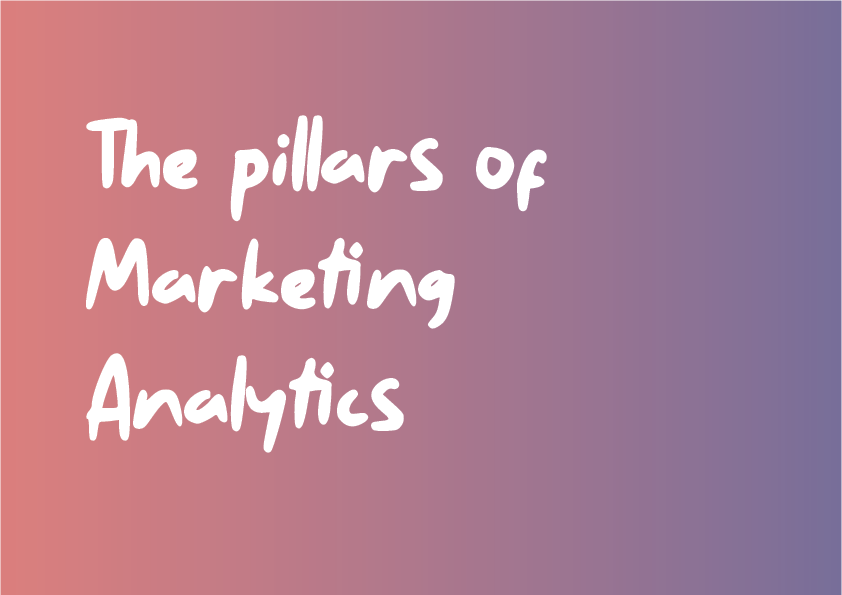
The Pillars of Marketing Analytics
Embarking into the elaborate universe of marketing analytics, it’s crucial to ground our insights in its foundational pillars. Similar to the ancient temples that stand tall on steadfast bases, the extensive domain of marketing analytics rests upon a few sturdy principles. These pillars serve as the structure to our endeavors and navigate us through the tumultuous seas.
🌊🏛️ A Map to the Treasure Islands of Analytics:
This chapter acts as your navigation guide through the murky waters of analytics, with each pillar illuminating the path towards insights and revelations. It's crucial whether you're a small potion shop decoding your clientele or a vast guild aiming to expand your influence.
🔢🌌 Quantitative vs. Qualitative Data:
1. The Countable Kingdom 🏰🔢 - Quantitative Data:
- Nature: It’s the structured, methodical realm of numbers and metrics, providing clarity through measurable and objective data.
- Examples: Visitor counts, sales numbers, bounce rates.
- Strengths: Offers objectivity and reliability.
- Limitations: It lacks the depth of understanding the 'why' behind the actions.
2. The Realm of Revelations 🌳🔮 - Qualitative Data:
- Nature: This is the domain of opinions, feelings, and interpretations, enriching our understanding beyond just numbers.
- Examples: Customer reviews, feedback forms, in-depth interviews.
- Strengths: Provides depth and understanding of the ‘why’.
- Limitations: It can be subjective and harder to generalize.
💃🕺 The Dance of Data:
The convergence of Quantitative and Qualitative data provides a holistic insight into customer behaviours and preferences, allowing marketers to weave richer, more informed narratives.
🛍️🚶 Behavioural Metrics:
1. Deciphering Tracks 🧭📌:
- Nature: They are indicators of customer interactions with a brand or product.
- Applications: Decoding user behavior and fine-tuning user experience.
- Tools: Various tools and software provide visual maps and heatmaps to understand user behaviour more effectively.
2. Interpreting Metrics 🕵️♂️👣:
- Objective: To not only narrate tales of past interactions but also to guide future enhancements.
- Importance: Helps in understanding the nuances behind raw metrics and adjusting strategies accordingly.
📜✨ Different Lenses of Analytics:
1. Chronicles of the Past 🏰🕰️ - Descriptive Analytics:
- Nature: It narrates the factual happenings of the past.
- Applications: Monthly sales reports, website traffic summaries.
2. The Sage’s Scrutiny 🔍🧙♂️ - Diagnostic Analytics:
- Nature: It investigates the ‘why’ behind past events.
- Applications: Analyzing product return rates, delving deep into customer feedback.
3. The Oracle’s Vision 🔮🌌 - Predictive Analytics:
- Nature: It envisages probable future outcomes based on historical data.
- Applications: Forecasting sales, predicting product demands.
4. The Alchemist’s Advice 🌿⚗️ - Prescriptive Analytics:
- Nature: It shapes the future by recommending actions based on past insights and future predictions.
- Applications: Tailoring product offers, and inventory management recommendations.
Each of these analytic styles is akin to a spell in a marketer's spellbook, assisting brands and businesses in unlocking unmatchable success by knowing when to use which analytic style, guiding through the adventures in the journey of marketing analytics with more enchanting insights awaiting exploration. 🌟📚

Essential Metrics for Marketers
In this section, we delve deep into essential marketing metrics, which serve as the cornerstone for evaluating marketing performance and strategic adjustments.
These metrics provide insights into different facets of marketing, allowing marketers to measure growth, confirm their strategies, and understand which aspects need attention, irrespective of the scale of operation. Let’s uncover the following critical areas of marketing metrics: Web Traffic, Engagement and Interaction, Conversion, Customer Retention and Loyalty, and Financial Metrics.
Web Traffic Metrics
Understanding web traffic is crucial to ascertain the effectiveness of online presence.
- Total Visits:
This metric reflects the overall attendance on your website.
- New vs. Returning Visitors:
Provides insights into outreach success and content stickiness.
- Page Views:
The sum of individual page visits reflects content engagement levels.
- Average Session Duration:
Indicates the level of engagement and interest in the content provided.
- Bounce Rate:
High bounce rates may signify a mismatch between customer expectations and the content provided.
- Traffic Sources:
Understanding where your visitors come from is essential for optimizing outreach.
- Top Pages:
Identifying most visited pages helps in understanding visitor preferences.
- Exit Pages:
Identifying where users generally exit can highlight areas of potential improvement.
Understanding these metrics helps marketers refine their strategies, ensuring an engaging and user-friendly online presence.
Engagement and Interaction Metrics
Monitoring engagement and interactions give insights into user behaviour and content appeal.
- Click-Through Rate (CTR):
Reflects the effectiveness of your content or advertisement in encouraging interactions.
- Time on Page:
Measures the appeal and engagement level of individual pages.
- Social Shares:
Indicate the shareability and appeal of your content.
- Comments and Interactions:
Active interactions reflect higher engagement levels.
- Scroll Depth:
Measures the depth of content consumption.
- Event Tracking:
Monitors specific interactions to understand user behavior.
- Interaction per Visit:
Aggregates total engagements in a single visit.
- Content Recirculation Rate:
Measures the flow from one piece of content to the next.
Conversion Metrics
Understanding conversion metrics is key to knowing how effectively your strategies are transforming visitors to customers.
- Conversion Rate:
Indicates the effectiveness of the conversion strategies.
- Cost Per Conversion:
Reveals the cost involved in achieving each conversion.
- Conversion Paths:
Unravels the different routes taken by visitors before conversion.
- Multi-Channel Funnels:
Identifies the most effective channels driving conversions.
- Abandonment Rate:
Reflects the percentage of almost conversions.
- Goal Completion Rate:
A clear indicator of the effectiveness of your strategies in meeting set goals.
- Return on Ad Spend (ROAS):
Reveals the revenue earned for every dollar spent on advertising.
- Lead to Close Ratio:
Showcases the proportion of leads who become customers.
Customer Retention and Loyalty Metrics
Maintaining customer loyalty is crucial for sustained business success.
- Customer Retention Rate (CRR):
Reflects the ratio of returning customers.
- Customer Churn Rate:
Quantifies the number of customers who’ve stopped engaging.
- Customer Lifetime Value (CLTV):
Calculates the total value a customer contributes over their lifetime with your business.
- Net Promoter Score (NPS):
Measures customer willingness to recommend your services or products.
- Loyalty Program Participation:
Tracks participation and engagement in loyalty programs.
- Repeat Purchase Rate:
Measures the frequency of repeat purchases.
- Customer Feedback & Satisfaction Scores:
Provides insights into customer satisfaction levels and areas of improvement.
- Redemption Rate:
Measures the effectiveness of your rewards or discounts.
Financial Metrics in Marketing
Understanding financial metrics is essential for evaluating the economic viability and success of your marketing strategies.
- Return on Investment (ROI):
Evaluates the gains relative to the investment made in marketing.
- Customer Acquisition Cost (CAC):
Calculates the cost involved in acquiring each customer.
- Marketing Margin:
Measures net gains after all marketing costs are considered.
- Cost Per Lead (CPL):
Quantifies the cost required to acquire a potential lead.
- Average Order Value (AOV):
Measures the average monetary value of each order.
- Marketing Spend Ratio:
Represents the portion of total budget allocated to marketing.
- Marginal Efficiency of Capital (MEC):
Focuses on maximizing returns on incremental investments.
- Profit Margin Percentage:
Represents the net profit earned after all expenses.
Grasping these financial metrics allows marketers to secure better financial planning and allocation for their marketing activities.
Conclusion
Embarking on this analytical journey provides marketers with profound insights to adapt and enhance their marketing strategies, ensuring a more targeted and successful approach. Understanding these multifarious metrics propels businesses to greater heights by aligning marketing strategies with business objectives.

Instruments of Insight
Exploring the Intersection of Numbers & Nuance 🧰🔮
Venturing through the varied vistas of knowledge, it has become apparent that excelling in marketing analytics is not only about metrics and methodologies. It's about leveraging specialized instruments that aid in converting extensive data into comprehensible narratives. Here we introduce the key tools essential for interpreting data and drawing meaningful conclusions.
Web Analytics Platforms: Deciphering the Web's Whispers 🕸️🌌
Web analytics platforms serve as our lenses into the intricate world of the web, helping to interpret the subtle harmonies and hidden patterns.
- Google Analytics:
The prime guide through the boundless digital landscape, offering comprehensive insights into user interactions and behaviours.
- Adobe Analytics:
A notable figure in analytics, it provides a detailed view into user traffic, enriched with diverse and customizable dashboards.
- Hotjar:
Offers insights into user engagement through heatmaps, showing interaction hotspots on your platform.
- Matomo:
An advocate for privacy, providing insightful analytics through an open-source platform without compromising user confidentiality.
- Mixpanel:
Focuses on the details, monitoring user interactions and engagement with precision.
- Crazy Egg:
Provides clarity on user interaction with scroll maps and spotlight sections, highlighting areas of interest on your platform.
Customer Relationship Management (CRM) Systems: Forming Bonds from Chaos 🤝🔮
CRM Systems are the key to cultivating and maintaining customer relationships, turning mere interactions into lasting connections.
- Salesforce:
A comprehensive suite for managing contacts, campaigns, and conversions, blending routine with remarkable insights.
- HubSpot:
A holistic approach to CRM, it orchestrates every interaction, creating a symphony of customer engagement.
- Zoho CRM:
Focused and adaptable, Zoho hones in on customer interactions, creating cohesive campaigns.
- Microsoft Dynamics 365:
A multifunctional platform integrating various business processes and offering data-driven insights with finesse.
- Pipedrive:
Optimizes the sales pipeline, guiding prospects to become patrons with precision.
- Nimble:
A harmonious blend of information, networks, and nuances, creating a natural and intuitive customer relationship environment.
Data Visualization Software: Crafting Insightful Imagery 🎨🌠
Data Visualization Software transforms raw data into visual narratives, revealing patterns and insights.
- Tableau:
Converts intricate data into understandable visuals, offering a transformative approach to data interpretation.
- Power BI:
A powerful tool by Microsoft, it harmonizes diverse metrics into coherent visuals, bringing clarity to complexity.
- QlikView:
A proficient platform that addresses both qualitative and quantitative data, offering a comprehensive view of insights.
- Looker:
Illuminates data with clear and layered visuals, providing a lucid understanding of complex datasets.
- Domo:
A dynamic platform creating deep and insightful visual representations of data.
- Google Data Studio:
A versatile tool that refines voluminous data into interactive and engaging dashboards.
SEO and SEM Tools: Mastering the Art of Online Presence 🌍💫
SEO and SEM tools are instrumental in optimizing online presence, and guiding the journey through the digital cosmos.
- Google Search Console:
A robust platform offering invaluable insights into search performance and user behaviour.
- SEMrush:
A strategic tool providing insights into keywords, competition, and campaign performance, enhancing online visibility.
- Ahrefs:
A comprehensive SEO tool providing insights into domain performance, backlinks, and competitive positioning.
- Moz Pro:
A versatile SEO tool offering unique metrics and insights to shape online presence effectively.
- Google Ads:
A multifaceted advertising platform optimizing online presence across various Google networks.
- Ubersuggest:
A resourceful tool unveiling opportunities and user trends, providing unique insights into the digital landscape.
Social Media Analytics Platforms: Narrating the Social Symphony 🕊️✨
These platforms are the conduits through which the rhythms of social interactions are understood and interpreted.
- Sprout Social:
A comprehensive platform synthesizing social interactions and sentiments, translating metrics into meaningful narratives.
- Hootsuite Analytics:
An integrated platform providing a wealth of insights into social media performance and trends.
- Brandwatch:
A proficient platform offering insights into brand presence and audience engagement across social media platforms.
- Buffer Analyse:
A balanced approach to social analytics, offering insights into behavioural trends and performance benchmarks.
- Socialbakers:
A specialized platform analyzing social media trends and sentiments, providing a detailed view of social media performance.
- Facebook Insights & Twitter Analytics:
Dedicated platforms offering in-depth insights into audience demographics and interaction trends on their respective networks.
Conclusion
Each tool serves as a guide through the myriad pathways of data and narratives, enabling marketers to decipher the latent stories within the numbers and interactions. As we traverse through this multifaceted landscape, let these instruments illuminate our way, translating the myriad whispers of the digital domain into coherent tales of insight and strategy.

Data Collection
Exploring Information Harvesting
In this chapter, we’ll delve into the essential first step of analytics: data collection, exploring various methods and considerations integral to this process.
The Distinction Between First-party and Third-party Data
This section will introduce two major categories of data:
-
First-party Data
- *Origin*: This data originates directly from interactions with your brand and includes website activities and survey responses.
- Strengths:
- Authenticity: It is pure and unaffected by external influences.
- Relevance: Specifically focused on your brand.
- Consent-Centric: Often explicitly endorsed by the participants.
- Shortcomings:
- Volume: Limited in quantity compared to external sources.
-
Third-party Data
- Origin: It is aggregated from various external sources and provided by different businesses or brokers.
- Strengths:
- Volume: Offers extensive and varied information.
- Diversity: Encompasses a range of demographics and behaviors.
- Shortcomings:
- Reliability: The accuracy may be questionable.
- Consent Concerns: It often faces regulatory challenges and concerns over user permissions.
Both types have their distinct advantages and the optimal approach involves a balanced combination of both.
Cookies and Their Alternatives
Cookies have been a longstanding method for tracking user behavior online, but with evolving technology and increasing privacy concerns, alternatives are emerging:
-
Cookies
- Role: They are essential for capturing and recording user interactions online.
- Concerns: There are issues related to user privacy and data durability.
-
Alternatives
- Browser Storage: Offers more substantial, enduring storage.
- Device ID: Provide consistent, reliable identifiers.
- Authenticated First-party Data: Ensures ethical and engaged user data acquisition.
- Federated Learning: Offers a privacy-preserving data processing method.
Addressing Privacy Concerns and Ensuring Compliance
In the current digital landscape, privacy is paramount. The need for transparency, consent, and compliance with various regulations like GDPR and CCPA is crucial. This section will discuss:
- Privacy Concerns:
- User’s desire for control over their data.
- The risks of data breaches.
- The skepticism towards unobserved operations.
- Compliance Measures:
- Adherence to GDPR and CCPA.
- Securing consent for cookies.
- Providing opt-out opportunities.
Best Practices for Compliance:
- Maintaining transparency about data collection practices.
- Securing explicit consent before data collection.
- Regularly reviewing and updating compliance practices in accordance with evolving regulations.
Closing Thoughts:
Ensuring a balanced and lawful approach to data collection is the cornerstone for building trust and fostering user engagement. The pursuit of knowledge in this domain necessitates a commitment to ethical practices and continuous learning.
Onward Exploration:
With the foundational knowledge established in this chapter, readers are encouraged to further explore the subsequent chapters for more insights into the multifaceted world of data and analytics.
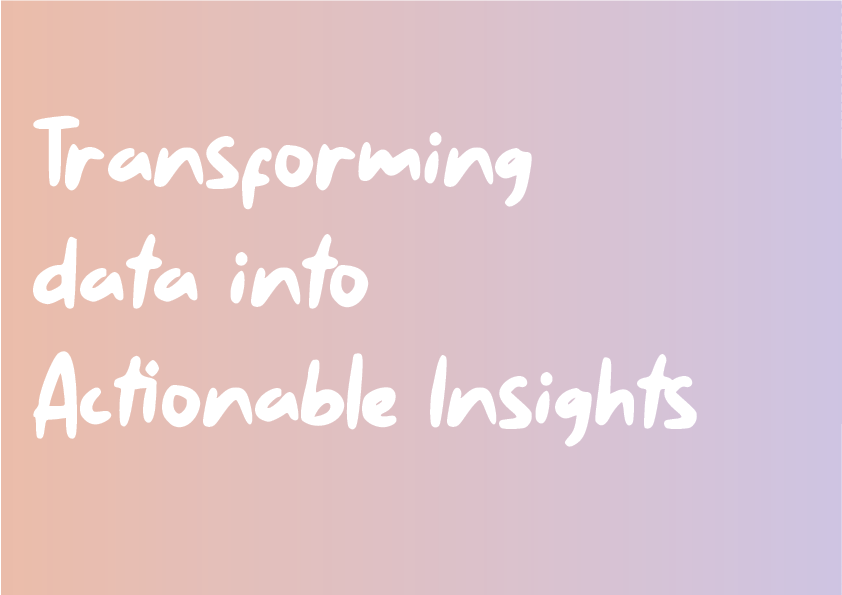
Transforming Data into Actionable Insights
From Metrics to Effective Strategies 🌪️🎭
Welcome, navigators of the analytical realm! Here, we transition from mere observation to the enactment of strategies, leveraging the wealth of data residing in our systems. It’s paramount to go beyond just gathering data; it’s about translating this valuable information into actionable insights and strategic maneuvers.
In this section, we delve into how to operationalize data-driven insights and strategies, with a focus on a practical approach to implementing marketing initiatives based on solid data foundations.
Crafting Insight-Driven Marketing Strategies
Developing Clear, Data-Backed Plans 🌠🗺️
Having amassed our valuable data, the challenge now is to create strategic plans grounded in this newfound knowledge. The journey involves meticulous planning, strategic thinking, and a deep understanding of one’s goals.
- Framework of Intentionality
Before diving into the data, it’s crucial to understand your end goals—whether it’s to increase engagement, brand awareness, or customer conversions. Setting clear, specific objectives enables a more focused approach in using the data at hand.
- Data Exploration
Dive into your data, segmenting and differentiating between different sources and types of information. Identifying patterns and opportunities in the data is key to formulating effective strategies.
- Integrating Method and Message
Personalize your approach based on the data, conducting tests to determine the most effective messaging and tactics. Iteration and refinement are vital in this stage.
- Evaluation and Continuous Improvement
Regular feedback and data analysis are crucial to ensure that strategies remain effective and aligned with the objectives. Adaptation and continuous learning are central to evolving strategies.
Segmentation and Targeting with Data
Understanding and Addressing Diverse Needs 🎭🔍
In the diverse digital landscape, understanding the varied needs and preferences of your audience is crucial. Segmentation and Targeting are key in formulating strategies that address the specific needs and preferences of different audience segments.
-
Segmentation Strategies
- Demographic Segmentation: This involves categorizing the audience based on age, occupation, location, and gender.
- Psychographic Segmentation: This delves deeper into the values, attitudes, and lifestyles of the audience.
- Behavioural Segmentation: Analyzing past behaviours and interactions to predict future actions and preferences.
-
Targeting Approaches
- Focused Targeting: Crafting content specifically tailored to a closely defined audience.
- Differentiated Targeting: Addressing the diverse needs of the entire audience with varied messaging.
- Niche Targeting: Crafting messages for specific, fervent segments.
-
Utilizing Data for Dynamic Strategies
- Advanced Clustering: Employ techniques like k-means clustering to categorize and understand different audience cohorts.
- Lookalike Audiences: Leverage platforms to identify and target audiences with similar behaviours and preferences.
- Predictive Analytics: Use algorithms and analytics to anticipate preferences and optimize strategies accordingly.
Optimization and A/B Testing Insights
Refining Strategies Through Informed Decisions 🎲💡
Welcome, students of strategy refinement! Here, we explore the dynamics of Optimization and A/B Testing to ascertain the most effective strategies and approaches.
-
Optimization Overview
- Goal-Oriented Adjustments: Start with a clear understanding of your desired outcomes.
- Ongoing Refinement: Optimization is a continuous process of learning and adapting.
-
A/B Testing Dynamics
- The Basis: This involves comparing two variants to determine which performs better.
- Designing Variants: Variants can range from major redesigns to subtle shifts.
- Ensuring Fair Exposure: Both variants should be tested under similar conditions.
-
Data-Driven Decisions
- Analyzing Results: Post-test analysis helps determine which variant is more effective.
- Learning from Tests: A/B tests provide insights into user preferences and behaviors.
- Iterative Learning: Continuous testing and learning are key to refining strategies.
-
Important Considerations
- Avoiding Overlaps: Prevent audience from encountering both variants to avoid confusion.
- Ensuring Statistical Significance: Base decisions on solid statistical evidence.
- Patience is Key: Give tests adequate time to yield meaningful insights.
In this journey, constant refinement, learning, and adaptation are crucial in ensuring the effectiveness and success of data-driven strategies in the evolving marketing landscape. Let's embark on this explorative journey, guided by the insights gleaned from our data! 🚀🌌
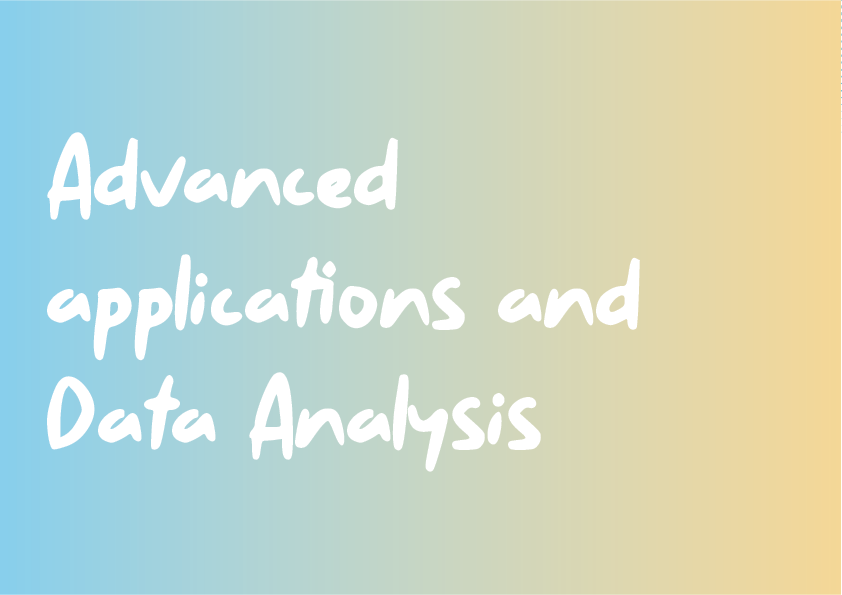
Advanced Applications and Data Analysis
Exploring the Frontiers of Insight and Prediction 🌌🔍
Up until now, our journey has revolved around the fundamental facets of analytics, engaging with the palpable and clear-cut realms. But, as the day concludes and the stars emerge, we are on the verge of delving deeper — ready to explore the profound and participate in the exceptional.
In this chapter, we will navigate through sophisticated insights, focusing on systems and strategies that approach the extraordinary. Advanced Applications and Predictive Analytics are at our doorstep, providing us glimpses into future outcomes and the science of forecasting.
Our field doesn’t just reflect the present. It shapes, directs, and brings forth the future. However, to access these future insights, we need to go beyond conventional wisdom, embrace the intricate, and embark on unparalleled explorations.
Prepare, innovative practitioner, to delve into realms previously thought unattainable. The advanced is calling, and the intricate is seeking interaction. Let’s explore the uncharted! 🔐✨
Implementing Machine Learning in Marketing
Integrating Innovative Metrics 🤖💼
As we traverse through the intricate realms of strategic knowledge, various systems present us with their capabilities, each echoing its uniqueness and scalability. One such noteworthy system is the impactful science of Machine Learning.
-
Understanding Machine Learning
- Automated Adaptations: Machine Learning (ML), fundamentally, allows algorithms to adjust autonomously. It’s about machines autonomously analyzing extensive data and making informed decisions.
- Learning and Adaptation: In contrast to conventional methods, ML is about algorithms learning from historical patterns and adjusting accordingly.
-
Marketing’s Innovative Application
- Forecasting Preferences: Interested in predicting if Fred from Fresno will prefer your new fries? ML models analyze various metrics and make such predictions practical.
- Personalization and Preference: With ML, Nancy in Nebraska gets suggestions related to necklaces instead of neckties, providing tailored interactions.
-
Data Dynamics
- Necessity of Data: For ML to be effective, it requires extensive and diverse data. The quality and diversity of this data influence the effectiveness of the model.
- Quality and Management: Quality data is crucial; poor input will result in unreliable forecasts.
-
Challenges and Considerations
- Avoiding Overfitting: An algorithm focusing too much on exceptions can jeopardize overall goals. Strive for sophistication but avoid unnecessary complexity.
- Ensuring Transparency: ML can sometimes seem complicated and unclear. It is crucial to understand the mechanisms to ensure clarity amidst complexities.
Machine Learning is the harmonious integration of mathematics and innovative insights, refining marketing strategies. As we move forward, it is vital to ensure that models are logical and make sense.
Engage your thoughts, innovators, as more dimensions of the future are ready to be unfolded. The next chapter of our narrative is on the horizon! 🌠🎛️
Predictive Modeling and Forecasting
The Science of Future Insights 🌠👨🔬
Greetings, navigators of future insights! As we continue our analytical voyage, we are nearing the rich realms of Predictive Modeling and Forecasting. Here, the interests in discovery merge with the knowledge of possibilities, guiding us towards unexplored territories.
-
Understanding Predictive Power
- Proactive Insights: Predictive modeling is about identifying patterns, anticipating challenges, and projecting performances based on historical data.
- Time-Based Analysis: Past patterns are instrumental in making informed future predictions.
-
Developing the Forecasting Tool
- Data as the Foundation: Our predictions are based on comprehensive data. The quality and balance of this data reinforce our forecasting abilities.
- Statistical Methods: Various techniques, from regression analysis to neural networks, are available, and the key is to match the right technique to the task.
-
Mastering Forecasting
- Trend Analysis: Identifying subtle changes in trends or recognizing consistent patterns in sales statistics is crucial.
- Cyclic Analysis: Understanding the regular occurrences, such as seasonal sales spikes or weekly declines, aids in making accurate forecasts.
-
Considerations and Real-world Applications
- Maintaining Models: With continuous changes in patterns, our forecasting models need regular adjustments and monitoring.
- Sales and Retention Predictions: Predicting product performance or foreseeing customer churn allows timely interventions to retain customers.
To forecast is not just to predict; it’s to prepare for the future, combining past experiences with innovative insights. Trust your tools but value perseverance and persistence.
Hold tight, seekers of unknown realms, our journey is expanding, and new chapters are unfolding! 🌌🔭
Sentiment Analysis and Social Monitoring
Analyzing Public Opinions and Conversations 🌊👂
Greetings, explorers of human emotions! As we proceed on our analytical journey, we are tuning in to the diverse voices expressing hopes, concerns, and emotions. Welcome to the domain of Sentiment Analysis and Social Monitoring, where online interactions offer valuable insights and alerts.
-
Deciphering Emotions
- Emotional Insights: Sentiment Analysis goes beyond evaluating words; it understands the emotions conveyed, distinguishing between different feelings and attitudes.
- Measuring Moods: It provides a deeper layer of understanding, beyond conventional metrics, deciphering the underlying emotions in interactions.
-
Social Monitoring: The Corporate Ears
- Online Conversations: It’s crucial to actively participate in online discussions to gather authentic insights about public opinions and attitudes.
- Brand Perception: Monitoring brand mentions and discussions help in understanding public sentiment about a brand.
-
Tools and Techniques
- Natural Language Processing: Sophisticated algorithms capable of understanding nuances in human communication are essential.
- Insight Platforms: Various software solutions are available to sort and present insights from the vast array of online interactions.
-
Applications and Ethical Considerations
- Campaign Adjustments: Aligning campaigns with public sentiments is crucial. Listen and adjust your strategies accordingly.
- Product Insights: Understanding customer preferences and needs help in refining product offerings.
- Ethical Listening: It is essential to listen respectfully and ethically, considering the depth and nuances in online interactions.
In this age of open communication, understanding the emotional currents of society is paramount. Sentiment Analysis and Social Monitoring act as guides, illuminating unseen aspects of public opinion.
Prepare, analyzers of emotion, our exploration is broadening, and more aspects are waiting to be discovered! 🌍🎧
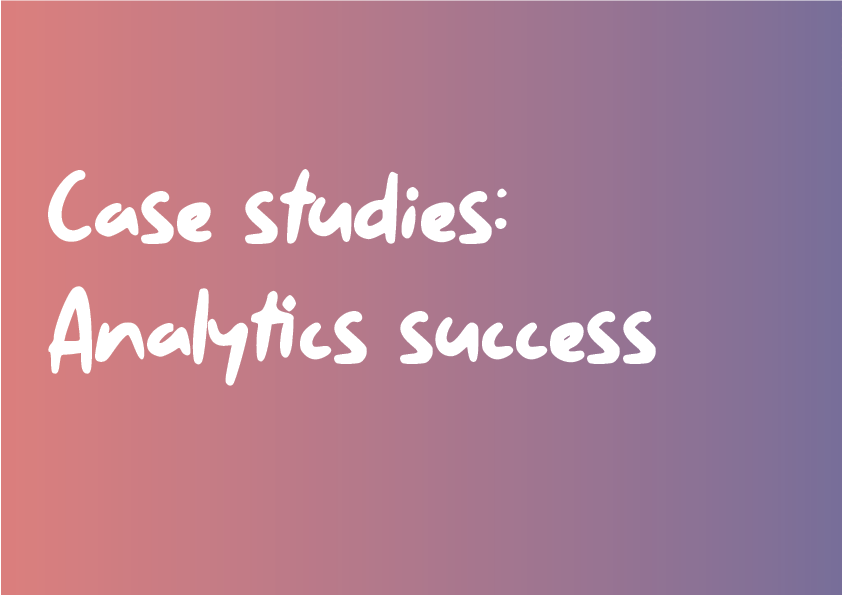
Case Studies: Practical Applications of Marketing Analytics
Practical Applications in Marketing Analytics 🕵️♂️📊
Greetings, esteemed explorers of analysis! As we navigate through this mountain of knowledge, let’s pause to explore real-world applications. We've navigated through narratives, pondered profound principles, and scrutinized the significant and the subtle. However, as the saying goes, "actions speak louder than words!" Welcome, dear readers, to our section of Case Studies: Practical Applications of Marketing Analytics.
In this chapter, we'll explore the strategies of various brands, interpreting their data-centric actions. We'll observe:
- Strategies that astonished the industry.
- Initiatives that danced and dazzled but ultimately didn’t impress.
- Missteps that caused repercussions, reshaping strategies and recalibrating perspectives.
Through real stories filled with victories and disputes, theoretical knowledge becomes practical. You'll witness instances where data informed narratives and outlined original statistics. From startups elevating their status using Facebook analytics to established brands refining their approach on Twitter through careful analysis.
So, focus your mind and prepare to tread carefully. May the insights gained from these narratives illuminate, invigorate, and drive innovation in your ventures!
Forward to the journey of exploring and understanding! 🌐🔍
Success Stories from Renowned Brands
As we commence this enthralling journey, we are about to explore success stories emerging from some of the most revered brands in the market. These tales describe not only victories but also challenges overcome and learning obtained. Brace yourselves, seekers of wisdom, as we navigate through the experiences of Leading Brands that utilized the benefits of Marketing Analytics.
-
The Coffee Puzzle: Starbucks’ Strategic Success 🍵✨
- Background: Amidst diverse options and endless competition, how did Starbucks maintain its unique appeal?
- Data-Driven Strategies: Implementing a loyalty card that records consumer preferences, intertwined with app analytics, allowed for the creation of highly personalized beverage solutions, considering taste, timing, and promotional offers.
- Key Learnings: By considering each customer’s preferences, Starbucks achieved success, one customer at a time.
-
Staying Current: Zara’s Successful Strategy 👗🔥
- Background: In the fast-paced world of fashion trends, how has Zara managed to stay ahead?
- Data-Driven Strategies: Rapid stock turnover was informed by real-time sales data. The integration of sensory and sales data helped in designing collections that resonated.
- Key Learnings: Zara’s agile adaptations to consumer preferences allowed it to capture the market pulse effectively.
-
Insights from a Tech Giant: Apple's Analytical Approach 🍏📱
- Background: Beyond innovative products and branding, what’s at the core of Apple’s competence?
- Data-Driven Strategies: Analyzing the extensive data from the App Store reveals the meticulous attention to user experience and functionality in each update.
- Key Learnings: For Apple, success is not just about creating captivating products, but about understanding the intricacies of user behavior and needs.
-
The Journey to the Top: Airbnb's Strategic Climb 🌍🏡
- Background: From shared spaces to luxurious locales, how has Airbnb built its kingdom?
- Data-Driven Strategies: Utilizing dynamic pricing models, influenced by demand, along with customized recommendations for hosts and guests.
- Key Learnings: Airbnb's rise was fueled by algorithmic intelligence, continuously aligning with the evolving needs and desires of its users.
From coffee to clothing, from technology to travel, these leading brands show that the real value is not just in 'big' data but in 'smart' data. Their experiences emphasize the importance of relying on empirical evidence and insightful analysis over mere intuition.
Prepare yourselves, diligent learners, as we transition from well-established giants to the aspiring newcomers. Our next segment focuses on the resilient startups mastering the subtleties of their fields. Onward to the stories of the resilient and the rising! 🌌🔭
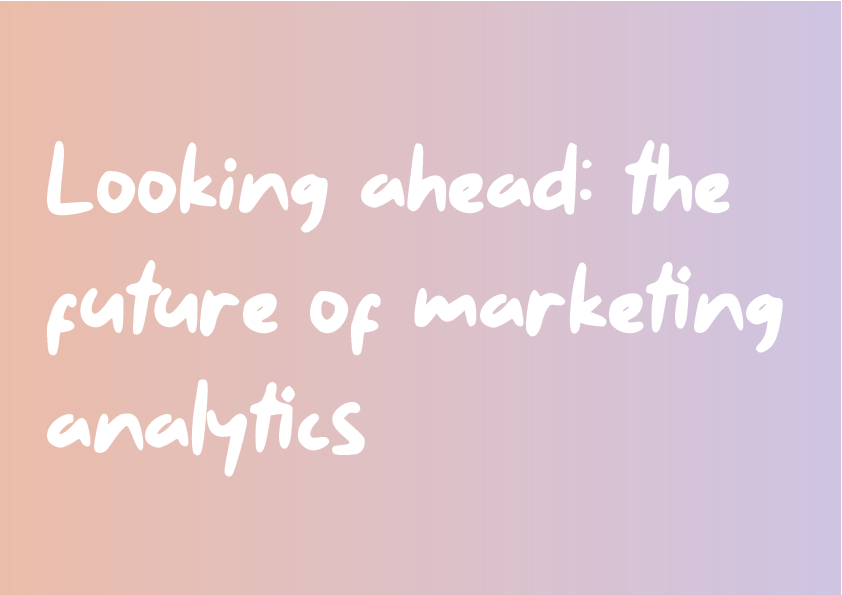
Looking Ahead: The Future of Marketing Analytics 🚀🔮
As we unravel the tapestry of times gone by and explore contemporary realms, our curiosity is piqued by the enigma of the forthcoming era. Here, in a realm fraught with uncertainties, possibilities are abundant and elements ever-evolving. Worry not! Our exploration into the morrow is rooted in rationality and guided by discernment. We'll navigate through the evolving landscape of Marketing Analytics, reflecting on emerging trends, methodologies, and technologies paving the path to progress.
🤖💡 Emerging Technologies
Technology is the harbinger of future victories in Marketing Analytics, and here, we investigate:
-
Artificial Intelligence (AI) & Machine Learning (ML) 🧠⚙️
- Development: They are advancing beyond rudimentaries, enabling enhanced predictions, personalizations, and pricing strategies.
- Implications: The necessity for marketers is to understand and ethically implement these technologies to avoid pitfalls and maintain authenticity.
-
Augmented & Virtual Reality (AR & VR) 🌐🕶️
- Development: They are blurring boundaries, offering immersive experiences and journeys through various realms.
- Implications: The challenge lies in creating realities that resonate and engage rather than alienate.
-
Internet of Things (IoT) 🌍🔗
- Development: It's embedding intellect in everyday objects, creating a network of integrated intelligence.
- Implications: The arising challenge is managing the massive influx of data while respecting consumer privacy.
-
5G & Beyond 📶🚀
- Development: Offering unprecedented speeds and real-time reactions, enabling dynamic, data-driven decisions.
- Implications: With speed comes the need for precision and the ability to manage emerging risks efficiently.
-
Quantum Computing 🌀🖥️
- Development: It’s shattering conventional computing limitations, offering accelerated analytical applications.
- Implications: Alongside speed, security concerns magnify, demanding adept handling.
📊🌍 Evolving Role of Marketers
Hello, integrative visionaries! As the marketing domain transforms, accentuating data-centric approaches, let’s delve into this transformative trajectory:
-
The Digital Darwinism 📲💡
- Transformation: Marketers are evolving as adaptive intermediaries, integrating diverse aspects seamlessly.
- Implications: The acquisition of diverse skills in analytics, automation, and AI is no longer optional but obligatory.
-
Storytellers to Statisticians 📖➡️🔢
- Transformation: The integration of substantive metrics with compelling narratives is now central to marketing strategies.
- Implications: The equilibrium between emotionally resonant stories and empirical data is the new pinnacle of marketing prowess.
-
Ethical Envoys 🌐🧭
- Transformation: Marketers are becoming custodians of ethical interactions, focusing on non-intrusive insights.
- Implications: Upholding consumer privacy and authentic interactions are now paramount in maintaining trust.
-
Lifelong Learners 📚🔄
- Transformation: The only constant is change, and continual learning is the marketer's new mantra.
- Implications: Persistent curiosity and learning are foundational in staying relevant in the ever-evolving landscape.
-
Collaborative Catalysts 🤝🚀
- Transformation: Cross-functional collaborations are breaking silos, fostering innovations across domains.
- Implications: Proficiency in diverse disciplines is essential for fostering holistic, effective strategies.
🌟🚀 Conclusion
As we steer through uncharted territories, our roles are elevating from mere spectators to active contributors. While data molds our environment, our ambition, aptitude, and agility will sculpt our journey ahead. Let’s embrace our multifaceted roles and plunge into this symphony of insights and aspirations, shaping the future with our endeavors.

Best Practices and Tips
Understanding the Intricacies of Numbers 📈🛠
As we've delved deep into the vast world of marketing analytics, it feels like navigating through a complex landscape. We've explored various aspects and discovered key principles. But, how do we refine our understanding? How do we sidestep common mistakes?
Welcome to this chapter packed with valuable insights! Think of this as your handbook for navigating this space, filled with helpful tips and strategies. These are tried-and-true practices, crafted carefully, to guide your marketing strategies efficiently through the complex terrain.
Whether you're a beginner understanding the basics or a pro fine-tuning advanced metrics, there are insights here for everyone. Let's optimize and elevate your methods with these strategies. Are you ready to dive in? 📊
Ensuring Data Accuracy and Integrity
The Foundation of Effective Analysis 🛡️🔍
Hello, champions of clear data! Ever embarked on a project, only to find your guiding metrics were off? In the world of marketing analytics, data is our guiding principle. But what use is data if it's not accurate? Let's discuss the importance of data accuracy and integrity.
1. Avoiding Misleading Metrics 🚨
- Issue: Even a small amount of incorrect data can lead us down the wrong path in our analysis.
- Solution: Regularly clean your data sources. Consistently review and correct any outdated or incorrect entries. Clean data leads to clear insights.
2. Consistent Data Collection 🔄📊
- Issue: Variability in how we collect data can cause inconsistencies in our findings.
- Solution: Use standardized protocols and processes. Ensure everyone, from every team, is aligned for consistent data collection.
3. Implementing Validation Checks 🔐🙌
- Issue: At times, incorrect data or outliers can slip through unnoticed.
- Solution: Use automatic validation systems. Allow software tools to verify and validate the data before logging.
4. Eliminating Duplicate Entries 🚫🔍
- Issue: Duplicate data can lead to skewed insights.
- Solution: Use deduplication tools effectively. Regularly check and correct records to maintain data integrity.
5. Investing in Training 🧠⚙️
- Issue: Effective tools require trained users.
- Solution: Continuously train your team. Ensure everyone has the necessary knowledge to manage, evaluate, and improve the data.
6. Ensuring Data Safety with Backups 🔄💼
- Issue: Accidents happen, and data can get lost.
- Solution: Always maintain backup strategies. Always be prepared with a recovery plan.
So, champions of data, as we traverse the analytics landscape, let's ensure our foundational data is robust. May our insights always be rooted in reliable data. To precision and beyond! 🌟🔍
Balancing Intuition with Data Insights
Striking the Right Balance 💭📊
Ever found yourself torn between your instincts and the numbers? In our data-driven world, metrics often guide us. But intuition also plays a vital role.
Balancing hard data with intuitive insights is a skill. Let's explore this further.
1. The Weight of Past Trends 🌌🔭
- Issue: Historical data offers valuable insights.
- Solution: While past trends provide guidance, always validate them against current data. Use historical context, but remain data-driven.
2. Trusting Initial Gut Feelings 🕰️🌪️
- Issue: Intuition can spark innovative ideas.
- Solution: Listen to your instincts but validate with data. When intuition signals a direction, cross-check with metrics.
3. Grounding Insights with Data 📉🧐
- Issue: Personal biases can sometimes cloud judgment.
- Solution: Always base decisions on data. Let insights inform and validate intuitive leads. Critical evaluation ensures better outcomes.
4. Understanding the Basis of Intuition 🍂🧬
- Issue: Gut feelings often arise from past experiences.
- Solution: Dive deep into why certain intuitions arise. Reflect on the interplay between data and instinct.
5. Synergy Between Intuition and Data 🎶🤝
- Issue: Relying solely on one can be limiting.
- Solution: Encourage a space where both intuition and data are valued. When both align, it can lead to breakthrough insights.
As we navigate decision-making, let's blend analytical insights with intuitive thinking. For in the balance of these two forces, we find the best solutions. Continue harmonizing, analytical artists! 📊
Staying Current in a Rapidly Changing Domain
The Marketer's Continuous Journey 🌍🔮
Hello, enthusiasts of evolution! In the dynamic world of marketing analytics, staying updated is crucial. Change is inevitable, and it's essential to stay ahead.
Join me as we explore strategies to stay attuned to the ever-shifting landscape.
1. Embracing Continuous Learning 📜🎓
- Issue: The domain is constantly evolving.
- Solution: Engage in courses, attend webinars, and specialize in new areas. Knowledge expansion is limitless!
2. Value of Networking 🍷🌐
- Issue: Collective wisdom offers new perspectives.
- Solution: Attend industry events, engage in online communities, and collaborate. Engage and enhance your expertise.
3. Adapting to New Tools 🌌🔭
- Issue: Tools and techniques are ever-evolving.
- Solution: Stay updated with software developments. Be open to adopting new tools that improve efficiency.
4. The Power of Reading 📚💡
- Issue: Books offer deep dives into specific subjects.
- Solution: Seek out influential authors and research. Books can be goldmines of information.
5. Learning from Experts 🦉🌟
- Issue: Mentors provide guidance and expertise.
- Solution: Connect with industry leaders. Their insights can shape your growth.
Dedicated marketers, as the industry evolves, ensure you continually adapt and grow. Stay curious and never stop learning. Forward into the future of marketing analytics! 🌌🚀
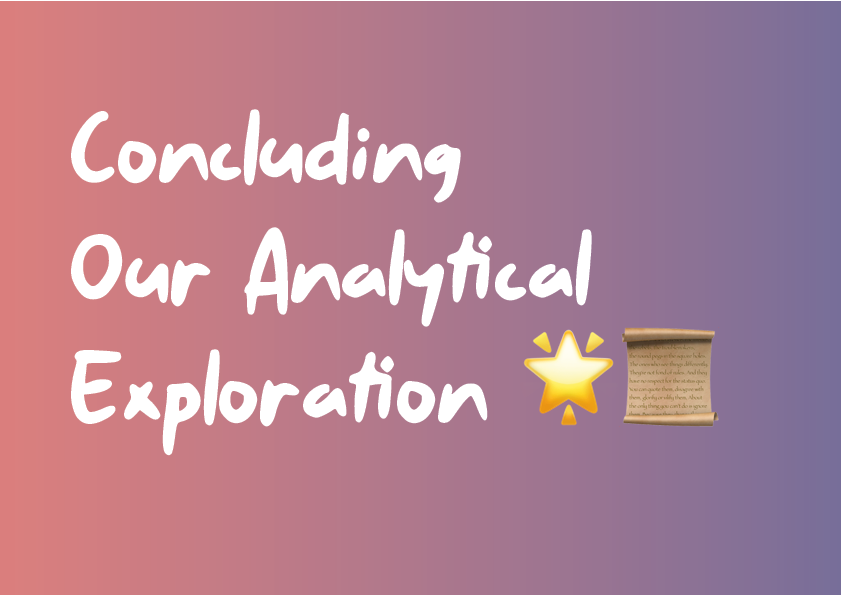
Concluding Our Analytical Exploration 🌟📜
Adopting an Analytical Approach in Marketing 📊❤️
If this exhaustive guide has conveyed one crucial truth, it's that data stands as the modern marketer's guiding principle. It is not just a mechanism, not a transient trend. It is a pivotal component of our current phase and will significantly shape our future. However, like any guide, its genuine potential is only revealed when the navigator fully comprehends and employs its capabilities.
-
Developing an Analytical Perspective 🌱🧠:
Engaging thoroughly with data transcends mere metrics; it involves cultivating an analytical perspective, a persistent propensity to probe, inquire, and validate. It’s about developing an appetite for insightful feedback, employing numbers not as confinements but as directional indicators.
-
Cross-functional Collaboration – Extending Beyond the Marketing Department 🤝🌐:
Recall, valued reader, data is not solely the territory of the marketer. Integration is essential. Establish productive alliances with the finance sector, mingle with software developers, and partner with customer service. Collectively, convert minute insights into impactful revelations.
Final Reflections and Motivation 🌅💌
From the historical narratives to the promising technologies of the forthcoming times, our journey through marketing analytics has been revealing, hasn’t it?
But let this not signify the closure, but rather an inception. 🌱
As we conclude this chapter, make a vow—no, commit to yourself—that this is not the zenith of your dedication. The fields of marketing analytics are extensive and diverse, brimming with untapped knowledge. Thus, fortify yourself with continuous learning, practical application, and unwavering resolve. Progress with zeal and intrepidity.
Bear in mind, the marketing universe is a dynamic compilation—captivating, enigmatic, and perpetually evolving. However, with data as your companion, the labyrinth transforms into a layout, the puzzle into a profound journey. Proceed, intrepid marketer, and may your data consistently lead you to remarkable realms.
Until our narratives converge once more, navigate safely, maintain your inquisitiveness, and continue mapping those unexplored territories! 🌌🚀